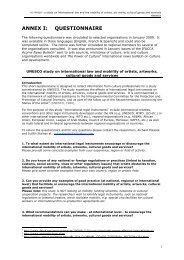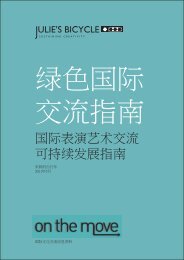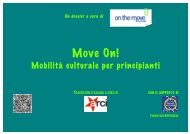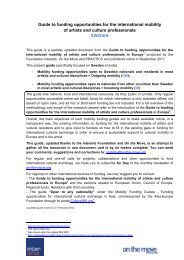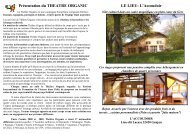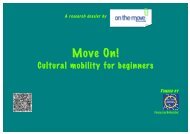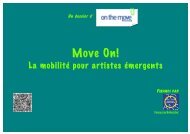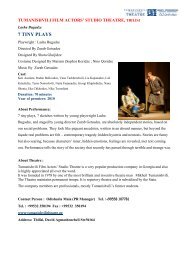DOWNLOAD Excited Atoms - On the Move
DOWNLOAD Excited Atoms - On the Move
DOWNLOAD Excited Atoms - On the Move
Create successful ePaper yourself
Turn your PDF publications into a flip-book with our unique Google optimized e-Paper software.
vm_interviews<br />
As part of <strong>the</strong> excited atoms research, significant artists, critical observers, networkers, digital<br />
activists and practitioners from around <strong>the</strong> world were identified and invited to contribute to <strong>the</strong><br />
study in early 2010 through short email interviews. They were asked <strong>the</strong> following questions:<br />
1. In what ways are you involved in virtual mobility/interactive networked performance<br />
2. Why do you choose to work in this way<br />
3. Can you trace when your interest in virtual mobility started and how it has changed over time<br />
4. What do you think are <strong>the</strong> benefits and strengths of virtual mobility compared to real time<br />
physical mobility<br />
5. How do you envisage <strong>the</strong> future in your field/artistic discipline Where are <strong>the</strong> new virtual<br />
arenas for participation in <strong>the</strong> performing arts<br />
The aim was to look at <strong>the</strong> key drivers now pushing and pulling artists, cultural producers, promoters<br />
and movers to collaborate, share, make, present and innovate using virtual mobility. Through <strong>the</strong><br />
voices of important thinkers, networkers and practitioners in <strong>the</strong> field, <strong>the</strong> research wanted to trace<br />
<strong>the</strong> history, map current practice and reflect on <strong>the</strong> future.<br />
Interviewees were offered a broad definition of virtual mobility:<br />
• <strong>the</strong> various practices of interactive networked performance where performers and audience<br />
can be in different physical or virtual places<br />
• new networking options in <strong>the</strong> performing arts (use of virtual tools for international mobility<br />
in training delivery, meetings & conferences)<br />
• <strong>the</strong> use of virtual channels in <strong>the</strong> creative process, enabling co-authoring and co-production<br />
of performance work by artists and producers in different geographical locations<br />
This section contains <strong>the</strong> edited interviews and is organised in four groups:<br />
• Practitioners: perspectives rooted in artistic practice<br />
Helen Varley Jamieson<br />
Susanne Berkenheger<br />
Matthias Fritsch<br />
Isabel Valverde<br />
Emma Cotter<br />
radical_hope<br />
• Projects & companies: organising virtual mobility<br />
Tiago Rodrigues: Long Distance Hotel<br />
Julianne Pierce: Blast Theory<br />
Niels Windfeld Lund: The World Opera<br />
Venzha Christ: House of Natural Fiber<br />
Inarra Saarinen: Ballet Pixelle<br />
Elizabeth & Jimmy Miklavcic: Ano<strong>the</strong>r Language<br />
excited atoms/<strong>On</strong>-<strong>the</strong>-<strong>Move</strong>.org mobility dossier/author: Judith Staines Page 39



